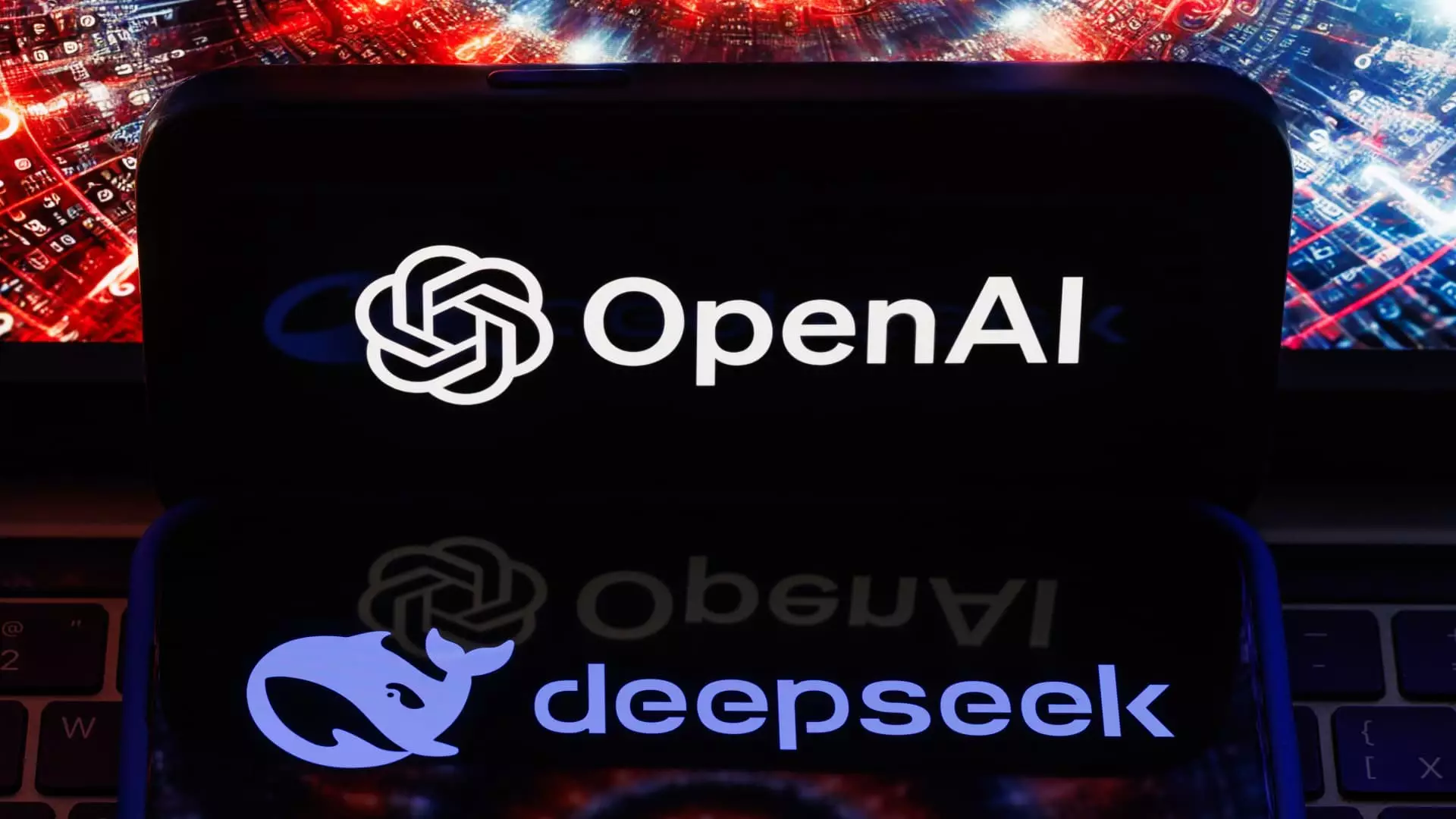In the rapidly evolving landscape of artificial intelligence, Chinese tech firm DeepSeek has emerged as a formidable player. At the recent Artificial Intelligence Action Summit in France, prominent tech executives voiced their concerns regarding the implications of DeepSeek’s advancements for the global AI race, particularly in light of the burgeoning competition between the United States and China. This new player has raised eyebrows, sparking discussions around cost efficiency and innovation, proving that China cannot be underestimated in the AI domain.
DeepSeek’s recent revelation of its new AI model, achieved with an impressively low training budget of under $6 million, has sent shockwaves through the tech community. In contrast to the vast financial resources being funneled into AI development by major Western players like OpenAI and Anthropic—often amounting to billions—DeepSeek’s approach has prompted a reevaluation of competitive dynamics in the sector. According to Chris Lehane, Chief Global Affairs Officer at OpenAI, this breakthrough highlights a tangible rivalry between democratic and authoritarian approaches to AI development.
However, DeepSeek’s products are not without their controversies. Critics have pointed to issues of censorship, particularly regarding sensitive historical events in China, like the Tiananmen Square massacre. The AI assistant developed by DeepSeek notably sidesteps questions on such topics, demonstrating the limitations placed on its responses. This raises crucial questions about the ethical implications of AI development under an authoritarian regime. Are technological advancements at the cost of transparency and ethics worth the competitive edge that these innovations may provide? These concerns add a complex layer to the narrative of AI strength and innovation.
Additionally, the ongoing rivalry is often compared to a scenario where only two nations can manufacture electricity at scale. In this analogy, the stakes are exceedingly high, as the capabilities of nation-states to influence global norms are intertwined with their technological prowess.
As conversations evolve, so too does the perception of China as merely a follower in the tech revolution. Experts like Reid Hoffman, co-founder of LinkedIn, have emphasized that DeepSeek’s emergence signals a serious shift in how the West views the competitiveness of Chinese technology firms. This recalibrated understanding is essential in grasping how quickly the landscape can change and how entrenched beliefs about China’s technological inferiority might be outdated.
Abishur Prakash, founder of The Geopolitical Business, reiterated this point, asserting that America’s assumed dominance in technology is being challenged. He highlights that the gap between the U.S. and China is not a recent development but rather the culmination of years of strategic advancements by Chinese firms. Such analysis extends beyond technical capabilities; it encapsulates a new geopolitical reality that mandates a reevaluation of existing power dynamics.
Despite DeepSeek’s emergence as a competitive force in the AI space, tech executives conveyed skepticism about the immediate threat it poses to established players like OpenAI and Anthropic. While DeepSeek’s technological breakthroughs are noteworthy, doubts linger regarding the actual costs associated with their development—potentially exceeding initial claims. Reports from experts have suggested that the overall expenditure for DeepSeek may surpass $500 million, lingering questions about the cost structures of their operations and the sustainability of their models.
Moreover, claims implicating that DeepSeek’s models may have leveraged inputs from existing, larger AI frameworks have sparked discussions about ‘distillation’ processes in developing AI. OpenAI has even indicated a possibility that its output data could have been utilized without authorization by DeepSeek, thereby inviting scrutiny into the ethical implications surrounding the methods of model training and data usage.
Looking forward, while DeepSeek’s advancements are impressive, experts urge caution in interpreting their potential to disrupt incumbent players significantly. The prevailing paradigm that larger models yield superior results remains intact. Insights from various AI executives, including Victor Riparbelli of Synthesia and Meredith Whitaker of the Signal Foundation, illustrate that while DeepSeek challenges traditional models of development, a true shift in the market dynamics still appears distant.
As we observe the unfolding narrative of AI competition between the U.S. and China, it becomes increasingly clear that understanding the scope of this rivalry requires a multifaceted approach. Factors such as ethical considerations, geopolitical implications, and the underlying economics of AI development will shape how the global AI landscape evolves in the coming years.
DeepSeek epitomizes the complexity of contemporary technological competition, posing challenges that merit ongoing scrutiny and analysis. The future of AI will hinge not only on technological prowess but also on the underlying values that guide its development.

